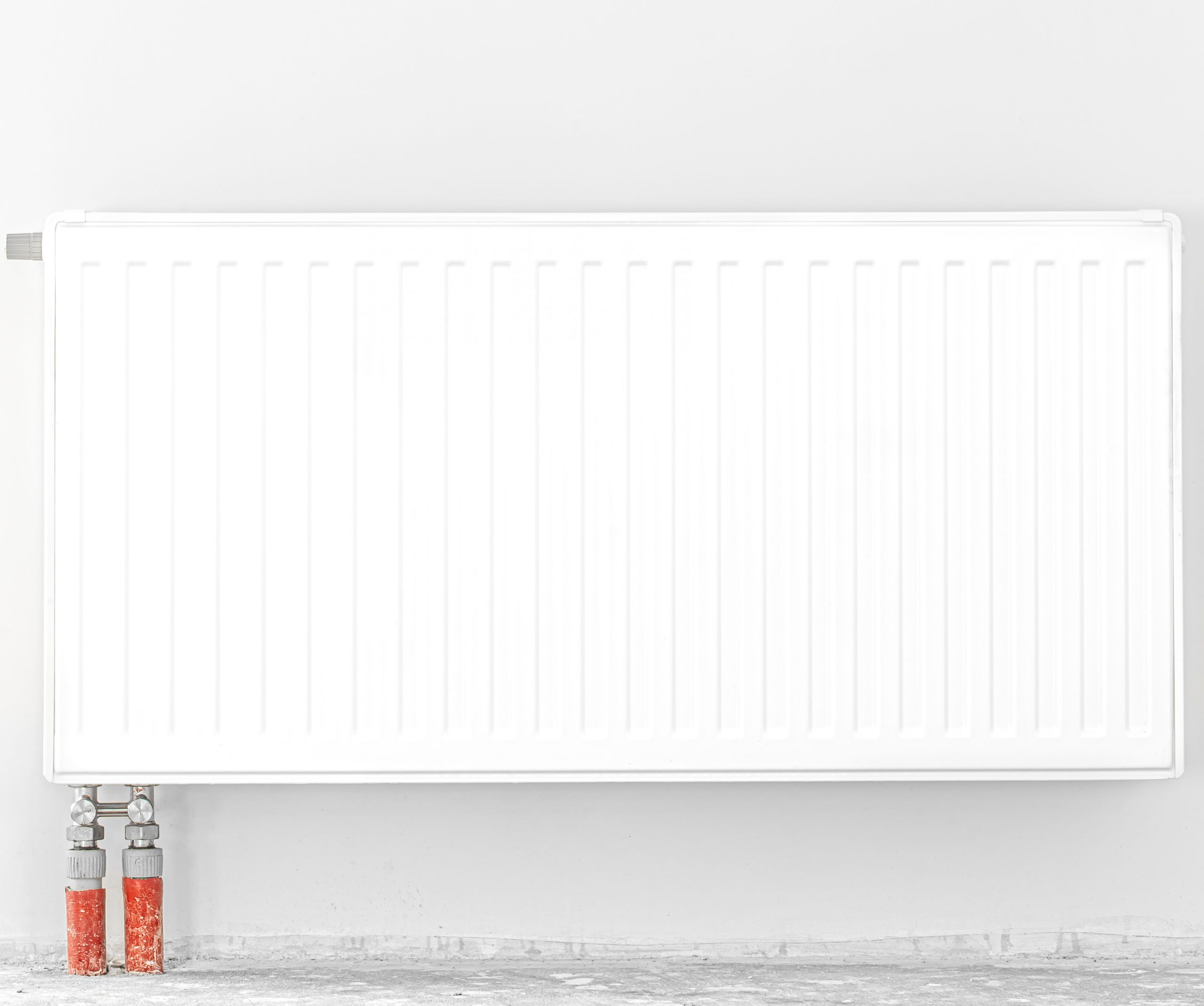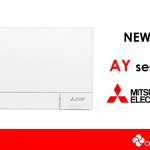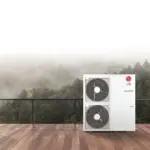How does air-to-water heat pumps with radiators work? Pros and Cons
27 February 2023 / Air-to-water heat pumps
Do you want to know how the air-to-water heat pumps with radiators works? In this article we explain how the air-to-water heat pump with radiators is the best option for heating your home efficiently and saving every month on your electricity bill. Read on to find out more.
Traditionally, radiators have been a common way of heating homes using gas or oil boilers. However, over time these heating systems are increasingly being replaced by more efficient and environmentally friendly systems such as air-to-water with radiators. Radiant air-to-waterers work by means of a heat pump that extracts energy from the outside air to heat the water that circulates through the radiators in the house. This heating system is cleaner and more efficient than traditional systems and saves money on heating costs. Furthermore, this heating system adapts well to different types of radiators, both conventional aluminium radiators and low-temperature radiators, which means that it is a viable option for most homes as it does not require any building work for installation.
Air-to-water heat pumps with conventional aluminium radiators
Although an air-to-water system can heat water up to 60ºC, conventional radiators require a higher supply temperature, i.e. the temperature provided in this case by the air-to-water system to the radiators.
However, because they require a higher flow temperature than that which can be generated by the air-to-waterer, this system loses efficiency compared to low-power radiators.
In summary, it is possible to use air-to-water energy with aluminium radiators and take advantage of the benefits of a more efficient heating system than traditional gas boilers, always bearing in mind that its performance will be lower than with other systems such as low temperature radiators or underfloor heating.
Air-to-water heat pumps with low-temperature radiators
Low-temperature radiators differ from conventional radiators in that the flow temperature is lower (between 35º and 40º) than aluminium radiators. In a conventional radiator, approximately 80% of the heat is transmitted by convection (i.e. warm air moves around the radiator and heats the room) and 20% by radiation (i.e. the radiator emits heat directly to nearby objects). In contrast, in low-temperature radiators, almost 100% of the heat is transmitted by convection, which means that it is able to supply heat more evenly and generates environments of greater thermal comfort, as the temperature is more uniform throughout the room and there are no areas of intense heat or cold.
Low temperature radiators require a lower supply temperature and are therefore ideal for use in conjunction with an air-to-water heat pump system as they allow energy savings of up to 70% compared to a traditional gas boiler system with aluminium radiators, which means a reduction of approximately 50% in the cost of the electricity bill.
How much does it cost to install air-to-water heat pump with radiators?
The installation of air-to-water will depend on the size of the room to be covered. However, we can say that on average the cost of installing a air-to-water heat pumps is around £11,000. To this should be added the price of the radiators. While conventional radiators usually cost around £290 per unit, low-temperature radiators cost on average around £450 per unit. Once again, we would like to remind you that although the investment in this system is higher compared to a gas boiler, it is an investment that pays off in the medium term, as the greater energy efficiency of air-to-water energy translates into monthly savings on the electricity bill. In addition, the European Union is encouraging the decarbonisation of the sector and therefore European governments are granting aid for the purchase and installation of these air-to-water heat pump systems.
Advantages and disadvantages of aerothermics with radiators
Pros
✅ Quick, easy and economical installation: The air-to-water heat pump system by aerothermia allows to take advantage of the radiators already installed in the home, even if it is necessary to install radiators, this installation does not require major works or changes in the structure of the house.
✅ Clean and renewable energy: air-to-water heating with radiators uses air energy, a renewable energy source, and does not require fossil fuels or gas, which makes it a cleaner and more sustainable heating option.
✅ Greater savings in heating costs: The initial investment in air-to-water heat pump with radiators is easily recouped through savings in long-term heating costs. Using an air-to-water system with aluminium radiators can result in savings of more than 50% per month on electricity bills.
✅ Low maintenance cost: After installation, air-to-water heat pump with radiators does not require constant maintenance, which makes it a more convenient and economical heating option in the long term.
✅ Clean system: air-to-water heat pump with radiators does not generate CO2 emissions or polluting fumes, making it a cleaner and more environmentally friendly option.
✅ Higher performance: air-to-water heat pump with radiators achieves higher performance than conventional gas or oil boiler installations with radiators.
✅ Aesthetically pleasing and quiet: The latest generation of low-temperature radiators have an attractive design and are quiet in operation.
✅ Remote control: air-to-water heat pump systems with radiators allow remote control via the Internet.
✅ Maximum comfort in any season: air-to-waterers heat pump with dynamic radiators allow reversible operation capable of heating or cooling, which guarantees maximum comfort in any season of the year.
✅ No drying out of the air: air-to-water heat pump with radiators do not dry out the air in the room, which means that they do not affect the indoor air quality.
Cons
❌ Higher initial investment: The initial cost of the air-to-water heat pump system with low temperature radiators is higher than the gas boiler with conventional radiators, however, the investment of this system is easily recoverable in the long term.
❌ More complex installation: As the boiler with conventional radiators is a standard option that is well established in the market, installation costs are lower and there is also a greater demand for professional installers, while air-to-water heat pump energy, on the other hand, being a technically more complex and innovative system, there are fewer qualified professionals to carry out the installation.





